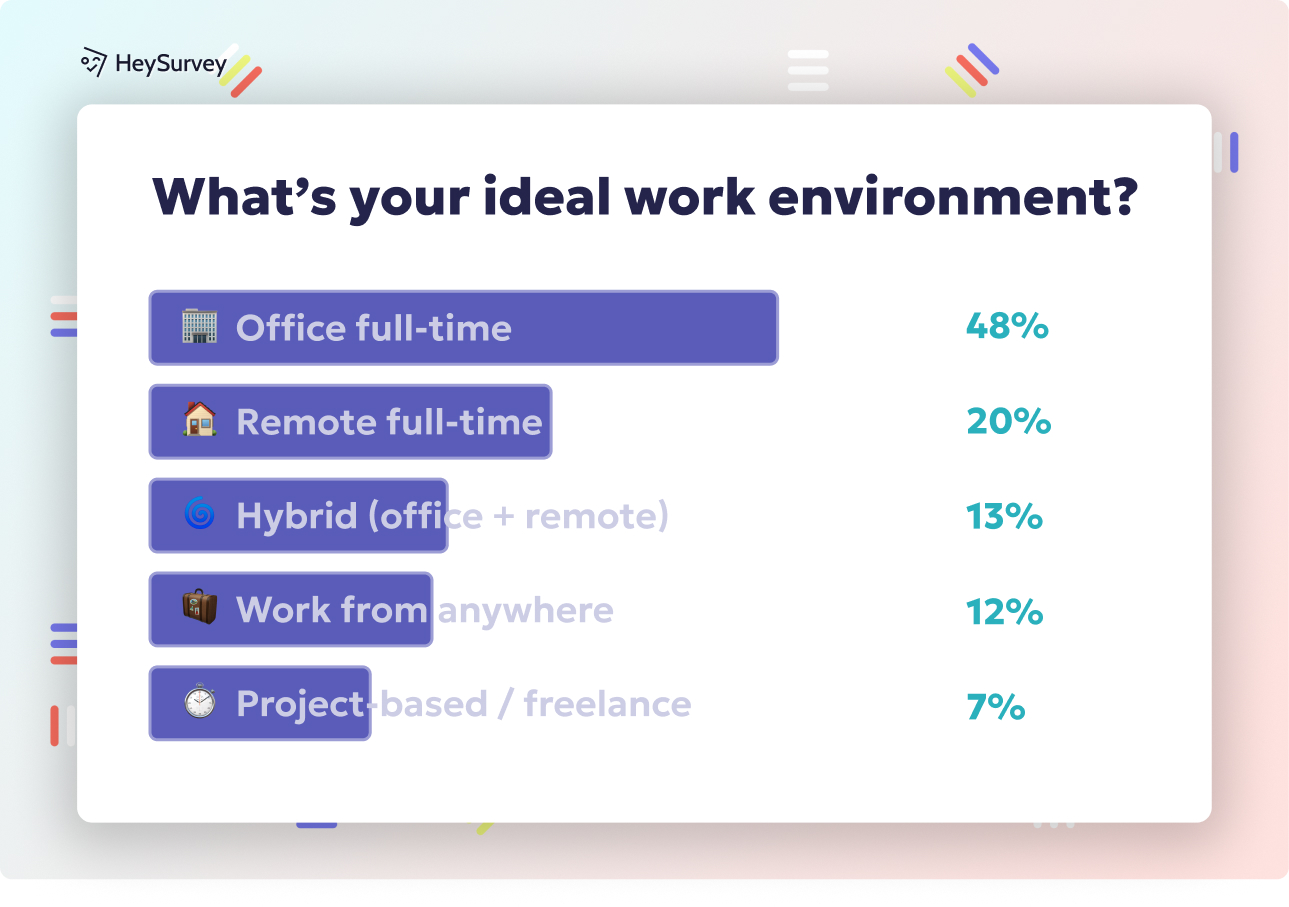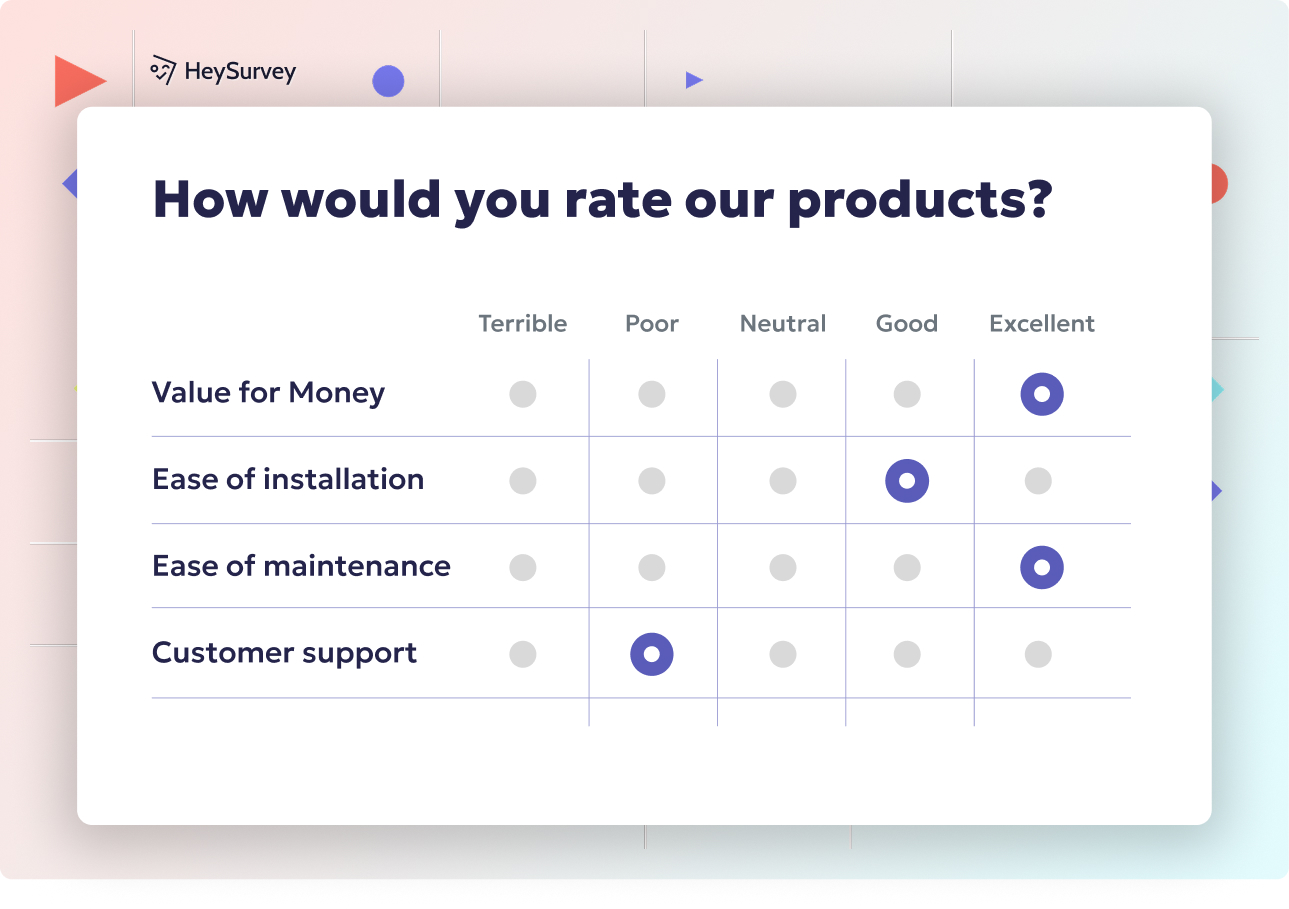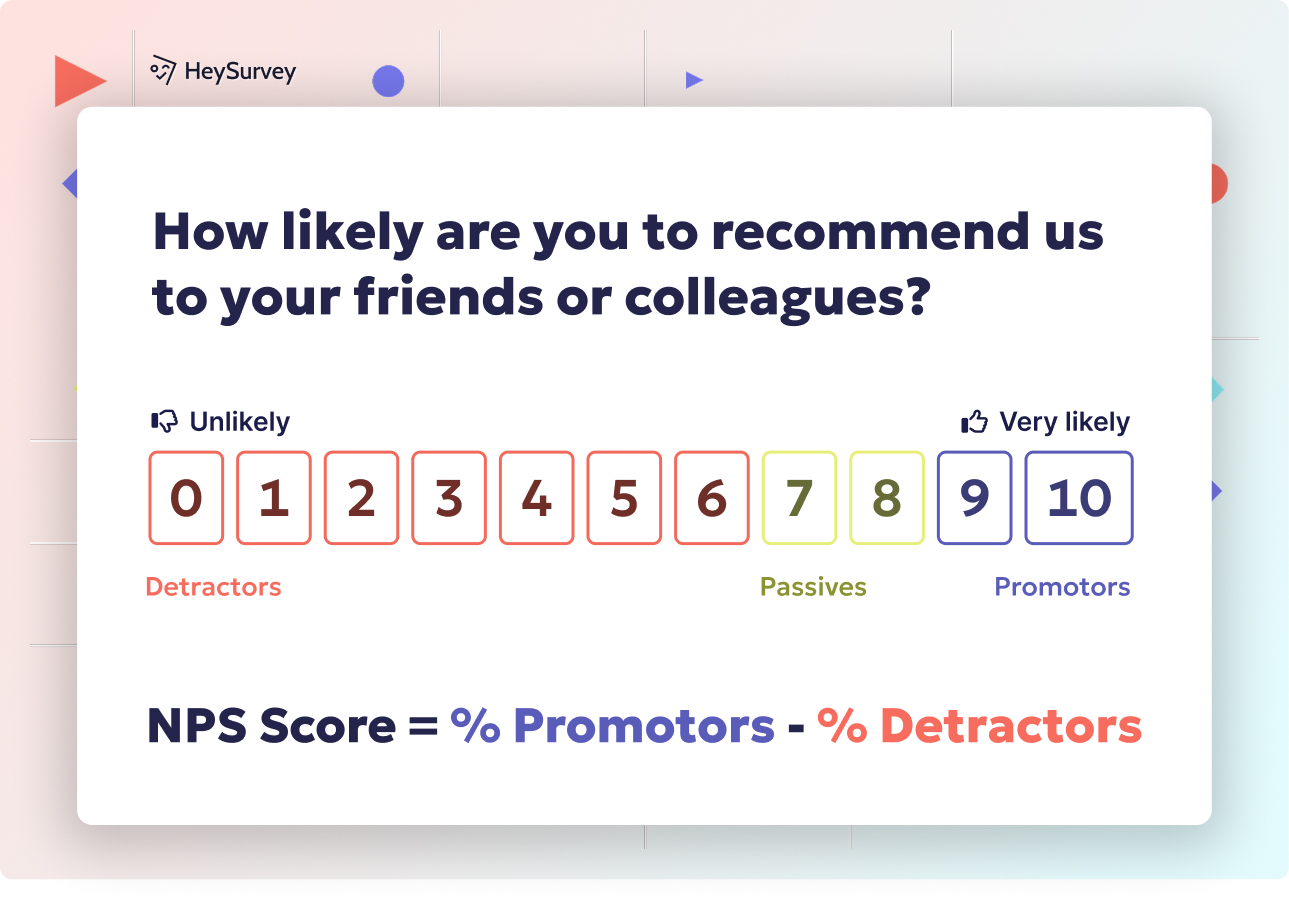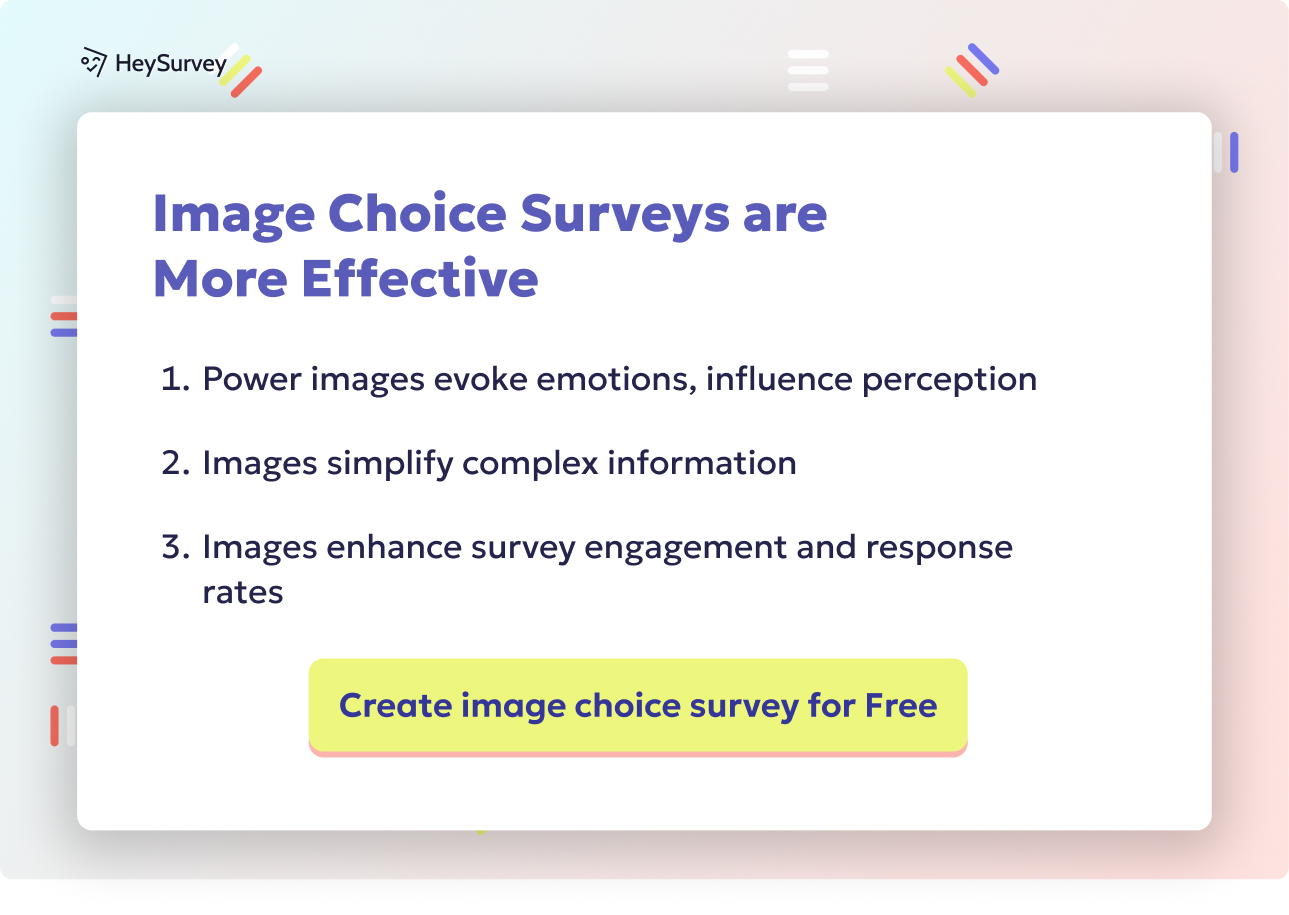32 Anxiety Survey Questions: Types, Uses & Best Practices Guide
Explore 25+ anxiety survey questions covering types, uses, and best practices for effective anxiety screening and support.
Anxiety is an ever-present companion for many people, lurking quietly or rampaging wildly through daily life, work, and school. It can trip us up in meetings, keep us awake before exams, and sneak into our interactions with others. Structured anxiety surveys are powerful tools for capturing these experiences, spotting problems early, and knowing when extra support is needed. Picking the right set of questions doesn’t just boost honesty—it helps paint an accurate, actionable picture of what’s going on, whether you’re a school counselor, manager, or care provider.
Generalized Anxiety Disorder (GAD) Screening Survey
Why & When to Use This Survey Type
GAD screening surveys are the classic go-to in clinics, telehealth check-ins, and wellness apps. If you’re looking for a quick, research-backed peek at a person’s baseline anxiety, this is it. GAD screening works wonders at the first intake—it helps sort out who might benefit from a deeper chat with a mental health pro.
These surveys shine during check-ups, offering a simple way to track changes over time. They’re also a perfect checkpoint before making a referral. Fast, focused, and validated, these questions pull real insights from brief answers, making it easy to prioritize who needs more care or reassurance.
- Spot overall symptoms efficiently
- Use as a first-pass tool for referrals
- Adapt well to routine checkups and app-based screening
Five Sample GAD Screening Questions
The GAD-7 serves as the gold standard, using a straightforward 4-point Likert scale: Not at all, Several days, More than half the days, Nearly every day. Let’s see five sample questions:
Over the past two weeks, how often have you felt nervous, anxious, or on edge?
How often have you found it difficult to control or stop worrying?
Do you experience restlessness that makes it hard to sit still?
How frequently do worries interfere with daily responsibilities at home or work?
How often do physical symptoms (e.g., muscle tension, rapid heartbeat) accompany your anxious thoughts?
With every answer, these questions help distinguish between a few frazzled days and true generalized anxiety. Consistent scaling means results are easy to interpret, flagging when it’s time to connect someone with support.
- Easy to deploy in digital or paper format
- Each question targets key GAD symptoms
- Efficient for both individuals and large populations
The GAD-7 is a valid and efficient tool for screening and assessing the severity of generalized anxiety disorder in clinical practice and research. (jamanetwork.com)

Creating your anxiety survey with HeySurvey is as easy as 1-2-3—and then some! Follow these simple steps to launch your first survey and start gathering insights in no time.
Step 1: Create a New Survey
- Head over to HeySurvey and click on “Create New Survey.”
- Choose whether to start from scratch with an empty sheet or pick a pre-built anxiety survey template for a head start.
- Give your survey an internal name, something like “Workplace Anxiety Check” or “Academic Stress Survey,” so you’ll recognize it later.
Step 2: Add Your Questions
- In the Survey Editor, click “Add Question” wherever you want it—top or between existing questions.
- Select the appropriate question type:
- Use Scale questions (Likert scale) for frequency or agreement scales.
- Use Choice questions for options like Never → Always or Strongly Disagree → Strongly Agree.
- Use Scale questions (Likert scale) for frequency or agreement scales.
- Enter each anxiety question exactly as you want it to appear. You can add descriptions if you want to clarify or provide examples.
- Mark crucial questions as required to ensure respondents don’t skip them.
- For extra polish, add images, style your questions with markdown, or duplicate similar questions to save time.
Step 3: Publish Your Survey
- When your questions look good, hit the Preview button to see how it will appear to respondents.
- Use the Designer Sidebar if you want to tweak colors, fonts, or layouts for a cleaner look.
- Once you’re happy, click Publish. You’ll need to create an account or log in if you haven’t already.
- Copy your unique survey link and share it with your respondents via email, social media, or embed it on a website.
Bonus Step 4: Apply Branding
- Upload your organization’s logo in the Branding section to make the survey feel professional and trustworthy.
- Customize colors and fonts in the Designer Sidebar to match your brand identity.
Bonus Step 5: Define Survey Settings
- Set start and end dates to control when your survey is live.
- Limit the number of responses if needed.
- Add a redirect URL to guide people to a thank-you page or additional resources after submission.
- Enable or disable options like allowing respondents to view overall results.
Bonus Step 6: Add Branching (Skip Logic)
- Use branching to tailor the survey path based on answers. For example, if someone reports high anxiety, you can direct them to extra support questions or resources.
- Configure this by clicking on specific answer choices and setting the “next question” they should see.
Ready to dive in? Click the button below to open a pre-built anxiety survey template and start customizing right away!
Social Anxiety (Social Phobia) Survey
Why & When to Use This Survey Type
Say hello to your inner wallflower! Social anxiety surveys are a lifeline for college counseling, workplace teams, dating apps—you name it. This survey is your best bet if the goal is to spot struggles that come up during interactions, group tasks, or big presentations.
You’ll want to use this survey before kicking off a social-skills workshop or starting a public-speaking course. It’s also invaluable before group therapy, giving facilitators vital info for tailoring support. Social phobia questions help organizations step up with exactly the right resources—before nerves get the better of participants.
- Pinpoint challenges linked to social settings
- Perfect for group-oriented programs or team interventions
- Boosts confidence in support planning
Five Sample Social Anxiety Questions
Answers on these questions usually use a scale like: Never, Rarely, Sometimes, Often, Always. Here are some sample questions:
How anxious do you feel when meeting new people?
How often do you avoid social gatherings due to fear of embarrassment?
When speaking in front of a group, how intensely do you fear being judged?
How much do you worry about saying or doing the wrong thing in conversations?
After social events, how often do you replay interactions and feel distress about them?
The real magic? Anonymity. People are much more likely to be honest when they know their answers aren’t tied to their name or social status, so always emphasize this when administering.
- Removes fear of social repercussions
- Helps identify both avoidant and ruminative symptoms
- Supports preventive planning for social stress
The Liebowitz Social Anxiety Scale (LSAS) is a widely used tool for assessing social anxiety disorder, demonstrating high reliability and validity. (en.wikipedia.org)
Workplace Anxiety Survey
Why & When to Use This Survey Type
We all know the jittery feeling before a big deadline—but what happens when that feeling is every day? Workplace anxiety surveys are the secret weapon for HR teams, employee wellness pros, and managers wrangling remote teams.
It’s smart to use these surveys during annual engagement checks, especially after changes like mergers or restructuring. Whether face-to-face or in a remote setting, these surveys can help identify systemic issues, clue leaders into unseen stressors, and open the door to honest conversations. Reducing workplace anxiety isn’t just a feel-good goal—it fuels productivity, retention, and job satisfaction.
- Uncovers hidden problems post organizational changes
- Boosts psychological safety by inviting honest feedback
- Sparks productive conversations around workload and culture
Five Sample Workplace Anxiety Questions
Use a 5-point agreement scale: Strongly disagree, Disagree, Neutral, Agree, Strongly agree. For deeper insights, follow with an open text box for comments. Sample questions:
How often do tight deadlines cause you excessive worry?
To what extent do you fear making mistakes that might impact your performance review?
How comfortable are you discussing workload stress with your supervisor?
How frequently do workplace interactions leave you feeling tense or on edge?
Do concerns about job security keep you awake at night?
Adding an open-ended follow-up lets individuals spell out their biggest stressors in their own words, giving HR detailed, actionable feedback.
- Identifies patterns causing team-wide tension
- Offers workers a safe place to express concerns
- Supports tailored workplace wellness initiatives
Academic/Test Anxiety Survey
Why & When to Use This Survey Type
Let’s face it: for students and learners, anxiety is often part of the curriculum! Academic anxiety surveys are a must for schools, ed-tech platforms, and tutoring centers who want the real story behind those clammy hands and racing hearts before exams.
The perfect time? Before big tests, after school orientation, or during one-on-one counseling. These surveys tell administrators exactly who might need extra support—sometimes before students even realize it. Including a few demographics like grade and subject (math, science, history) helps spot trends and target interventions with laser focus.
- Detects trouble spots before test season
- Equips counselors and teachers with insights for prompt support
- Allows segmentation by academic level for tailored solutions
Five Sample Academic Anxiety Questions
Questions work well with a scale like: Never, Rarely, Sometimes, Often, Always. Consider including extra fields for grade and subject. Here are sample questions:
How anxious do you feel before taking a test, even when well prepared?
During exams, how often does anxiety impair your ability to recall information?
How much do parental expectations contribute to your academic stress?
How frequently do you experience physical symptoms (e.g., sweating, stomachache) during class presentations?
After receiving grades, how long does worry about performance persist?
By pinpointing academic anxiety triggers, educators and learning platforms can personalize supports, from mindfulness apps to peer mentoring.
- Prioritizes early help for the most vulnerable students
- Links stress patterns to specific subjects or situations
- Encourages more open conversations around academic pressures
Academic anxiety surveys effectively identify students at risk, enabling timely interventions to reduce test-related stress. Source
Post-Event/Intervention Anxiety Follow-Up Survey
Why & When to Use This Survey Type
Just completed a workshop or therapy program? Time to check in! Post-intervention anxiety surveys are super useful for mental health professionals, group facilitators, and developers tracking their app’s impact.
The best timing is usually 1 to 4 weeks after the intervention—long enough for changes to settle, soon enough to remember the details. Use these surveys to spotlight what’s working, what isn’t, and what extra support might still be needed. This follow-up makes sure that early improvements stick, and that new concerns don’t slip under the radar.
- Measures program effectiveness with concrete feedback
- Supports continuous improvement of interventions
- Offers early warning if further help is needed
Five Sample Follow-Up Questions
These questions blend quantitative rating scales with a final free-text prompt for extra nuance. Try these:
Since completing the program, how often do you feel calmer in situations that used to cause anxiety?
How confident are you in applying coping strategies learned during the intervention?
Have you noticed improvements in sleep quality related to reduced anxiety?
How likely are you to recommend this program to others dealing with anxiety?
What additional support do you feel you still need to manage anxiety effectively?
Pairing each quantitative rating with an open-ended comment box gives professionals a clearer sense of individual journeys—straight from the source.
- Clarifies which skills “stick” after an intervention
- Reveals gaps needing more support or resources
- Fuels program improvements based on real feedback
Best Practices: Dos & Don’ts for Crafting Anxiety Survey Questions
Getting anxiety surveys right isn’t rocket science—but it does take some care! Clear, compassionate language means more people will open up and complete your survey honestly. Here’s a handy list of what to aim for, and a few pitfalls to side-step:
Dos:
- Use everyday, non-judgmental terms
- Stick with consistent scales for all questions
- Pilot test your survey on a small group first
- Remind participants of their confidentiality
- Offer resources or support links at the end
Don’ts:
- Combine two issues in one question (“Do you worry at home or school?”)
- Steer answers with leading language (“You feel better after meditation, right?”)
- Use clinical jargon that’s tough to understand
- Insist on names or emails unless absolutely needed
Finishing with a validated anxiety scale or inviting an anonymous mental-health survey response reassures participants their thoughts matter—and will be used responsibly.
- Pilot testing boosts clarity and inclusiveness
- Consistent scaling aids interpretation, saving time later
- Support links underline a caring, action-oriented approach
Conclusion: Turning Survey Insights into Action
Choosing the right anxiety survey can reveal the hidden stress shaping work, school, and daily life. By picking clear, thoughtful questions, you’re not just gathering data—you’re showing real care and commitment. Don't forget to build in a plan for check-ins and share insights with key folks to keep improvement rolling. You can always iterate on your questions to make them even better. Ready to go deeper? Download a custom anxiety survey template or consult a professional for a truly tailored approach.
Related Health Survey Surveys

30+ Health Care Satisfaction Survey Questions: Templates & Tips
Explore 30 expert health care satisfaction survey questions across six types to boost patient fee...

31 Body Image Survey Questions: Types, Usage & Best Guide
Discover 35 expert body image survey questions across 7 proven types to measure body satisfaction...

31 Essential Domestic Violence Survey Questions: Types & Uses
Explore 30+ domestic violence survey questions covering types, uses, samples, and best practices ...

